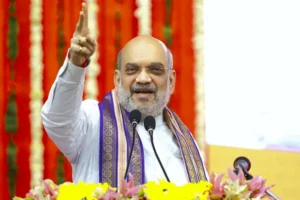
In a groundbreaking study, researchers from Osaka Metropolitan University in Japan have successfully regenerated bone tissue in animal models using stem cells derived from adipose — the body’s fatty tissue.
The technique proved effective in treating spinal fractures in rats, which resemble osteoporotic vertebral fractures seen in humans.
Researchers highlighted that adipose-derived stem cells (ADSCs) offer particular advantages as they can be easily collected, even from elderly individuals, while causing minimal stress to the body.
The researchers believe this non-invasive approach could revolutionise treatment for patients suffering from bone diseases and fractures caused by osteoporosis.
The study revealed that ADSC transplants markedly enhanced bone regeneration and strength in rats, while also activating genes responsible for bone formation and repair.
The findings appeared in Bone and Joint Research, a peer-reviewed journal on musculoskeletal science.
“This study has revealed the potential of bone differentiation spheroids using ADSCs for developing new treatments for spinal fractures,” said Yuta Sawada, a researcher at the Graduate School of Medicine, Osaka Metropolitan University.
A Safer and Simpler Treatment Option
Lead researcher Dr Shinji Takahashi explained that deriving the cells from fat tissue minimises strain on the patient, making the procedure safe and easily accessible.
“This simple and effective technique can help treat even complex fractures and may significantly accelerate healing,” he said.
Osteoporosis, a degenerative disease that weakens bones, making them brittle and prone to fractures. Among these, compression fractures of the spine are the most common and can lead to chronic pain, immobility, and a drastic decline in quality of life.
To achieve the results, the researchers developed ADSCs into bone-differentiated spheroids — three-dimensional spherical clusters — and combined them with beta-tricalcium phosphate, a material widely used in bone reconstruction. This combination successfully repaired spinal fractures in the animal models.
Dr Takahashi said the research could pave the way for future clinical applications, adding that the technique may offer a new treatment to extend patients’ healthy lifespan and reduce the impact of osteoporosis-related fractures.
Furthermore, the success of the Osaka team’s experiment demonstrates how regenerative medicine continues to transform healthcare.
If human trials replicate these results, ADSC-based therapies could offer a minimally invasive, safe, and efficient solution for bone repair, reducing recovery time and improving life quality for millions worldwide.
Also Read: Lakshadweep Woman Diagnosed With Amoebic Meningoencephalitis In Kerala’s Kochi
To read more such news, download Bharat Express news apps























